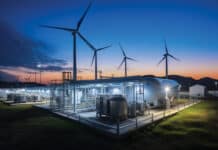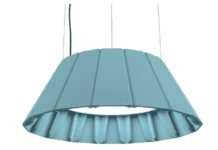This web exclusive comes from Karl Williams, vice president of energy solutions for Rexel, Inc.
 According to the U.S. Department of Energy, world wide energy consumption will increase approximately 40% by the year 2035, and carbon emissions could double by 2050. At present, the commercial and industrial sectors account for 61% of total electrical usage in the United States. [Source: U.S. Energy Information Administration.] At this pace, the strain on the planet’s ecosystem will be enormous and will impact generations to come.
According to the U.S. Department of Energy, world wide energy consumption will increase approximately 40% by the year 2035, and carbon emissions could double by 2050. At present, the commercial and industrial sectors account for 61% of total electrical usage in the United States. [Source: U.S. Energy Information Administration.] At this pace, the strain on the planet’s ecosystem will be enormous and will impact generations to come.
Considering these daunting statistics (and the fact that utility costs are rising and will continue to rise), the job of a facility manager has never been more challenging, and the decision of when and how to make a building more energy efficient has never been more critical.
So, how does a facility manager get started? While there are many factors to consider, it generally starts with a little research to gain a basic understanding of the resources available, followed by a frank assessment to determine whether upgrading to an energy efficient facility is a realistic proposition. This is a project that requires careful consideration as it often demands a significant level of financial commitment. However, when done correctly, the results can deliver an outstanding return on investment. Outlined below are several important factors to consider before, during. and after the upgrade.
Understanding Your Existing Technology
Before facility managers even begin energy efficiency upgrades, they first need to know what they are dealing with. Understanding what technology and equipment is already installed is critical to uncover the key opportunities for an energy efficiency project.
Gathering the correct information at the outset will help establish the foundation for a plan of action and will determine what areas would benefit most from an upgrade. Because no two facilities are alike, there is no standard approach. While lighting is often the first consideration, many facilities could realize a bigger benefit by upgrading their HVAC system or systems controls. The age of the existing equipment or technology is a major factor.
Older technologies will likely benefit the most from an overhaul, however this will probably require a larger capital investment. But don’t assume that a facility wouldn’t benefit from newer technology because it may only be a few years old. Advances in our industry and changes in government regulations make efficiency upgrades a good investment for nearly any facility.
One significant regulatory change is the slated government mandate that eliminates certain fluorescent tubes (T12s). If this change goes through it could well affect 40% of the commercial properties in the US today.
Making The Decision
Once there is an understanding of the benefits of an upgrade, facility managers need to ask themselves and their ownership, “Do we want to be the greenest building on the block? Or are we looking to get the fastest return on our investment?”
It is an important question to ask, because it will determine the level of commitment the company is willing to make. This is also the time to set realistic expectations. Don’t assume that upgrading to the latest technology will deliver the fastest return on investment (ROI). That is not always the case.
Partners You Can Trust
Each and every step in becoming more energy efficient requires a greater level of expertise. Whether it’s evaluating current technology, understanding installation services, or examining financial considerations, facility managers have to decide who they can turn to for guidance and consultation. Following are a few individuals or groups who can help facilitate the process:
- Electrical contractor: The person who probably knows your equipment the best and the one who can help assess the technology already in place. Depending on the scope of the project, your electrical contractor may also be involved in the installation. It is critical for facility managers to have a level of trust with their electrical contractor, since they are usually the first source for answering questions and concerns.
- Distributors: Depending on the services offered, a distributor can also be an excellent resource for facility managers. Since distributors are not tied to a specific manufacturer, they can offer an unbiased solution for upgrades. Some distributors have teams of energy solution specialists who can assist with an energy audit, design a solution, find the right contractor for the job, and provide post-installation consultation. One of the biggest services a distributor can provide is identifying government rebates and tax benefits of an upgrade, both of which improve ROI.
- Energy Consultants: A third party who can evaluate the systems and technology in place and provide an audit of what technologies would benefit the most from an upgrade. However, in the end, installation and maintenance would still have to be handled by your contractor or a distributor serving as project manager.
As with any project, make sure to ask for references and examples of work. When sending a project out for bid, it is likely that companies may quote the project from different specs. Without a high level of guidance, there will almost certainly be confusion and a lack of consistency in the bids. Facility managers should also have reassurance from the installer that they will be around after the project is completed for maintenance, repairs, and other follow up questions.
Return On Investment
Finances and ROI are often the determining factors when deciding on an energy upgrade. As with any major project, facility managers will be charged with establishing and managing an overall budget and making sure the investment is money well spent.
Determining the ROI is key when upgrading a facility. Certain upgrades, like switching from a 32-watt lamp to a 25-watt lamp, can produce a quick return, but might not address many of the performance issues in an older facility. Again, this goes back to the primary objective for the project: Do we want to be the greenest building on the block or do we want a faster ROI? Customers with older buildings will require more than a light bulb switch and will probably have a longer wait for their investment to be fully realized, but they may also reap greater savings through more efficient operations in the long term.
Merchandising Your Upgrade
This is an important and often ignored aspect of an energy upgrade, but one that can have a lasting impact. Often these upgrades will not only improve the quality of lighting conditions for employees, but more energy efficient operations can also create an enhanced perceived value of your facility.
Here are just a few statistics to help demonstrate the impact of even the smallest changes:
- If you exchange 25 100W incandescent bulbs with their CFL (Compact Fluorescent Lamps) equivalents, you would:
o Get the environmental equivalent of planting 10 trees [Source: www.springlight.com].
o Save 27,912 pounds of CO2 emissions [at $0.12 per kWh].
o Save $2,300 in electricity over the life of the bulbs [at $0.12 per kWh].
- CFLs last 8 to 10 times longer than incandescent counterparts while using ¼ of the energy.
There are many reasons to consider an energy upgrade—cost savings, environmental considerations, better lighting, state-of-the-art technology, etc. Whatever your reason, make sure you understand your existing technology, then find a partner(s) you can trust to help guide you through the process and last but not least, evaluate both your short and long-term return on investment.





















![[VIDEO] Collect Asset Data at the Speed of Walking a Building](https://facilityexecutive.com/wp-content/uploads/2024/02/maxresdefault-324x160.jpg)
Comments are closed.